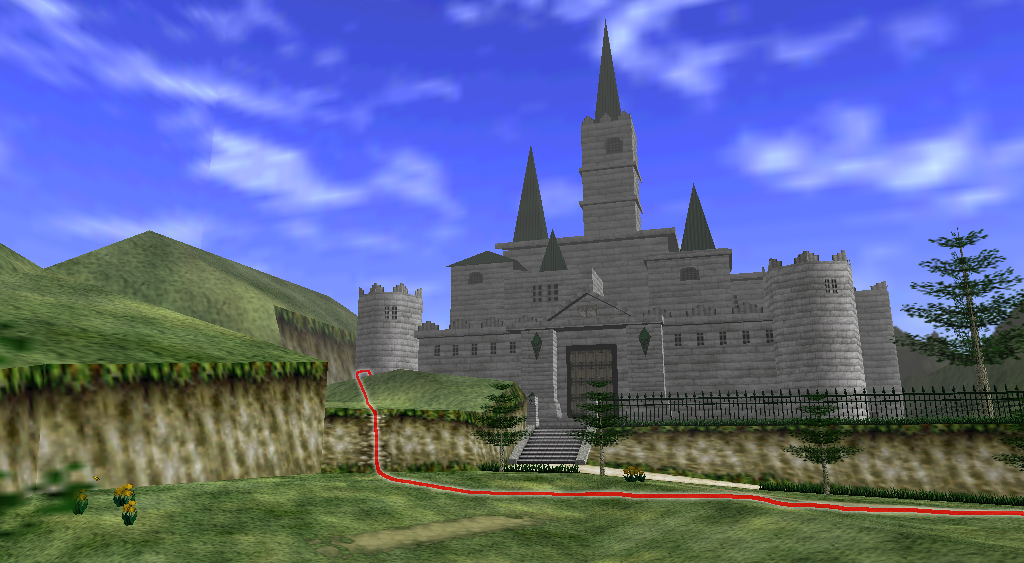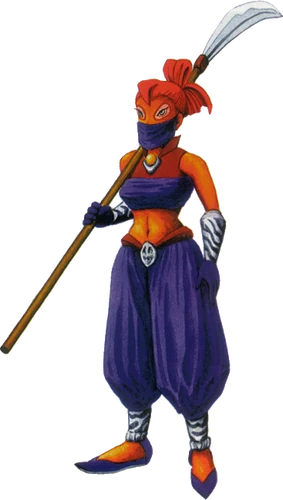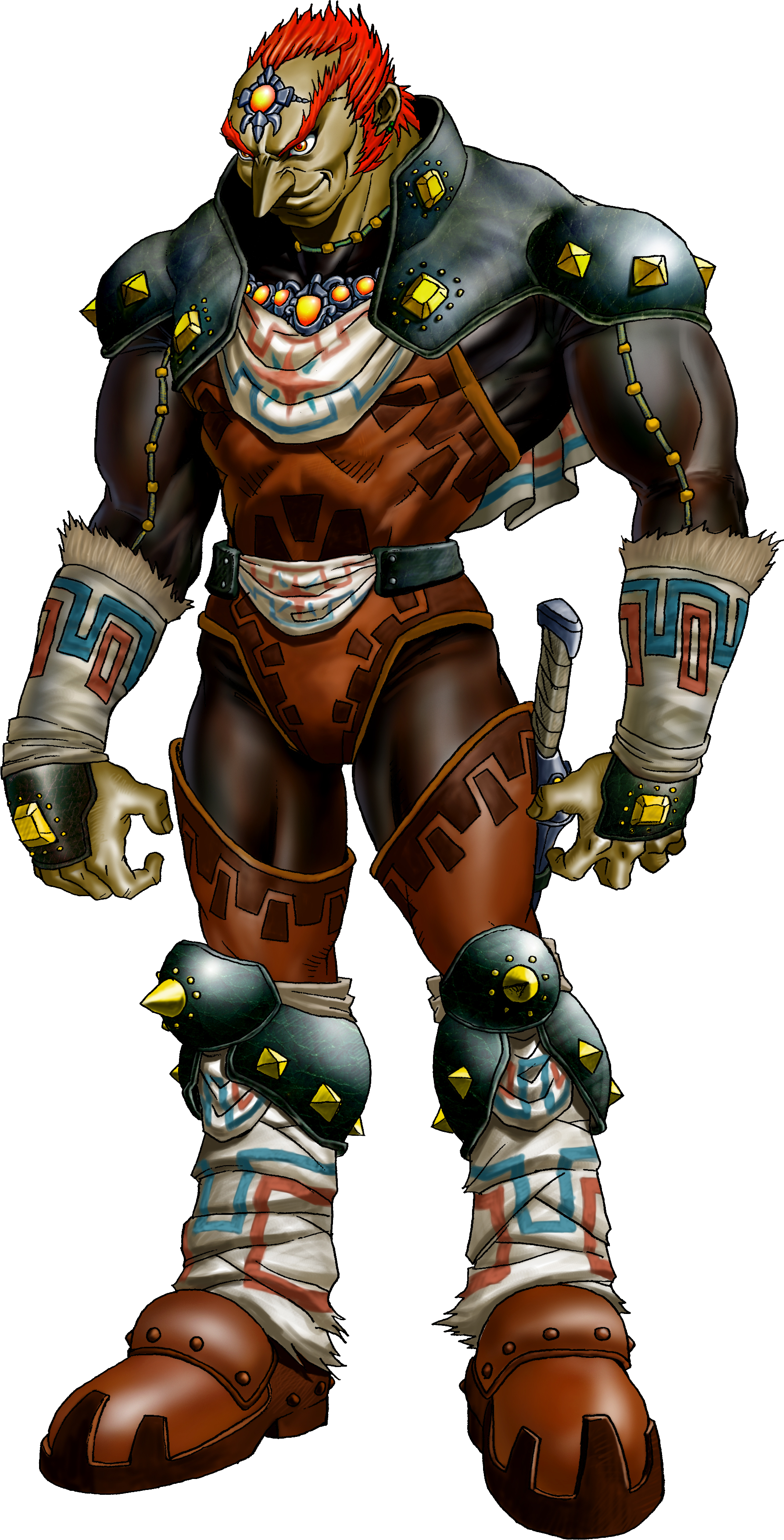Inspired by James Mendez Hodes’s “Orcs, Britons, and the Martial Race Myth”
While the Legend of Zelda series has been beloved since its early days, there’s a lack of critical analysis regarding it, perhaps because it’s only more recently that the perception of video games as an art form has become more mainstream. Now that this perception of games is more common, there’s an abundance of content ranging from YouTube video essays to op-eds on gaming journalism sites analyzing video games with the same attention and vigor as any other piece of literature, but it still seems in-depth analysis of the Zelda series is lacking. I’m not the first to criticize or analyze the Gerudo, but I wanted to delve into specifics about the race: their relationship with the patriarchy and the Martial Race Myth, mostly just within the Ocarina of Time game, although at some points I also contrast it with the latest installment of the series, Breath of the Wild.
Setting the Scene: Intro to Racial Politics in Ocarina of Time
In “The Gerudo Problem: The Ideology of The Legend of Zelda: Ocarina of Time,” Byron J. Kimball Identifies the setting of Ocarina of Time (as well as the other titles in the Zelda series) as a “Western-style,” “medieval-esque” kingdom (6) called Hyrule. Pinpointed are the thatched rooves in Kakariko Village, along with the turrets and drawbridge in Castle Town (6). The Temple of Time on the outskirts of Castle Town bears a resemblance to Gothic-style churches, with pointed arches and ornate windows (6).
All the inhabitants of these towns are Hylians, one of the humanlike races in the Zelda series. Hylians look just like humans, with the exception that they have pointed, elf-like ears. In Ocarina of Time, Hylians are also all white skinned. The protagonist, Link, is a blond-haired, blue-eyed Hylian. The other two humanlike races are the Kokiri – another elven race of pale-skinned characters who have childlike appearances for life – and the Gerudo.
Kimball makes an important note about the use of the term “race” within the game:
“Though one can easily perceive the term “race” as being interchangeable with “species” when the races of Hyrule are considered, ‘the very use of the word race (rather than species) is significant as it simultaneously draws upon and reinforces the preconceived notions of a race-based society’ (Monson, 2012, p.53). Though it should be said that the races/species present within Hyrule, with the exception of the European-esque Hyrulians and the Gerudo, are fantastical and clearly intended to not be perceived as human races or species, note that such depictions are rooted in ideas of contemporary racial politics and ideologies and that the game’s use of the word race cannot allow such ideas to be ignored or dismissed.”
Byron J. Kimball, “The Gerudo Problem: The Ideology of The Legend of Zelda: Ocarina of Time,” p. 7
In this fantasy world, the distinction of race still exists and is significant. There are clear boundaries between the races that are physical. They each live in their own areas of Hyrule: The Hylians in Castle Town and Kakariko Village, The Zoras in the Zora’s domain and Lake Hylia, the Kokiri in the Kokiri Forest, the Gorons on Death Mountain, and the Gerudo in Gerudo desert. Characters are rarely found outside the domain of their race – except for Link, who becomes somewhat of a white savior, being the only one who can successfully aid the other races with their troubles.
Arab Stereotyping and Controversy
There are numerous problems with the Gerudo in Ocarina of Time. They are portrayed as rather homogenous – only three different character models are used for all the Gerudo Characters: Nabooru and Ganondorf – the villain – have their own distinct models, while the rest of the Gerudo use the same model. Meanwhile, with the other two humanlike races, there is much more variety in the characters’ appearances. Most Hylians and Kokiris have distinct character models. There are also the obvious visual stereotypes: all the Gerudo women are dressed in relatively revealing clothing that is more reminiscent of a bellydancer – a common stereotype – than a warrior-thief, despite that being the reputation the Gerudo have. Many of the Gerudo women also wear a veil over their faces. They often dual-wield scimitar swords. ZeldaWiki describes the Gerudo as a “warrior race” and “band of thieves” who are feared by many throughout Hyrule. In a piece of dialogue from the game, one character says, “They say that Ganondorf is not satisfied with ruling only the Gerudo and aims to conquer all of Hyrule!”
So, the Gerudo certainly embody the Martial Race Myth James Mendez Hodes writes about in his essay. Ganondorf, the main villain and the king of the Gerudo, is thirsty for power and threatens to destroy Hyrule with his greed, aligning with what Hodes writes about “characterizations [that] came from popular European conceptions of the greatest threats to Western civilization.” There is rampant fearmongering even today that Arabs and Muslims pose a threat to “Western Civilization” that is mirrored by Ocarina of Time when the villainous, “sallow-skinned” Brown man tries to impose his power onto everyone else in the kingdom. Hodes writes about the concerning precedent that so many fantasy narratives center around European-esque characters as heroes while associating and basing “evil races” on people of color.
Another interesting quirk about the Gerudo race is that it’s mostly made up of women. For a reason that is never explained in-game, only one Gerudo man is born every one hundred years – the reincarnation of Ganondorf. He instantly becomes king of the Gerudo, and as the only man, and with his position of power, this dynamic conjures images of polygamy, which Arab Muslims are largely stereotyped to partake in.
There are also two tidbits I discovered related to the game and Islam. The first was about the original Fire Temple music allegedly sampling music from a Muslim prayer. Here’s a video that’s pretty thorough that addresses the topic. It’s a bit long, but a sample of the song can be found at 12:27 and a very brief summary of the issue is at 13:27.
Here is the second issue, as described by ZeldaWiki:
“The second religious reference in Ocarina of Time was the Crest of the Gerudo, which was far more widespread as it appeared as a motif on several elements through the game, including blocks, switches, and the Mirror Shield. This symbol was similar, but not identical, to the Star and crescent symbol that is prominent in the Islam, the Muslim community in general, and several national flags in Asia. Some of the differences between the two symbols include: The Islamic version has a 5-point star, while the Gerudo version has 4 points; the Islamic crescent faces to the right, and is not as “complete” or “closed” as the Gerudo one, which faces to the left; and many Islamic crescents have the star deeper in it, not at the edge like the Gerudo version does. In any case, due to the religious meaning of the symbol, Nintendo edited it out in all of its spots in the game, with a single exception. The newer Gerudo Symbol has since been a staple in modern revisions of Ocarina of Time.”
ZeldaWiki
I was also able to find some images of what this original symbol looked like. Apparently it can still be found in a secret area in certain versions of the game.
Has Breath of the Wild fixed any of the issues with the Gerudo?
Unfortunately, not really. There are two positives to the latest installment in the Zelda series: Gerudo Ganondorf isn’t in this game, so thankfully it’s lacking the “villainous Brown man” archetype. The Gerudo also still have a small military, but they aren’t a martial race anymore – there’s no mention of them being dangerous thieves. However, there are still definitely issues with them, especially in relation to the patriarchy.
In Breath of the Wild, Link can encounter Gerudo NPCs (non-player characters) throughout the game’s world. Remember how I said only one Gerudo man is born every 100 years? This means [heterosexual] Gerudo women have to search for male partners outside of their race. Almost any Gerudo traveler Link talks to will describe how she’s on a journey to find her true love or something of that sort. In fact, there are several side quests that involve helping Gerudos find partners. Now that the martial aspect of the Gerudo has been removed, there’s hardly anything to them except looking for a man. They also still have the same impractical clothing they’ve worn in the past.
Clearly, Nintendo still has a ways to go in terms of its representation of Middle Eastern characters. While the Gerudo are no longer inherently thieving and aggressive, they’re still over-sexualized, bear caricature-like stereotypical features, and were surrounded by some rumors regarding Islamophobia. As Hodes writes,
“If you find a way to scrub an explicit signifier from a racist expression, but keep the expression intact, you preserve the racist dynamic without the explicit identification. It keeps the content the same, but transforms an aggression into a microaggression—which, in polite society, is actually worse than an aggression, because it flies under the radar.”
James Mendez Hodes, “Orcs, Britons, and the Martial Race Myth, Part II: They’re Not Human
This series is meant to appeal to all ages, and if we choose base fantasy races on real oppressed peoples and cultures, we must do so mindfully and positively, because video games make impressions on everyone, especially children. It’s important not to just reproduce systems of oppression in fiction, but to actively deconstruct and criticize them within the work.
Works Cited
“Gerudo.” Zelda Wiki, https://zelda.gamepedia.com/Gerudo.
Hodes, James Mendez. “Orcs, Britons, and the Martial Race Myth.” James Mendez Hodes, 14 Jan. 2019, https://jamesmendezhodes.com/blog/2019/1/13/orcs-britons-and-the-martial-race-myth-part-i-a-species-built-for-racial-terror.
Hodes, James Mendez. “Orcs, Britons, and the Martial Race Myth.” James Mendez Hodes, 30 Jun. 2019, https://jamesmendezhodes.com/blog/2019/6/30/orcs-britons-and-the-martial-race-myth-part-ii-theyre-not-human.
Kimball, Byron J. (2018) “The Gerudo Problem: The Ideology of The Legend of Zelda: Ocarina of Time,”PURE Insights: Vol. 7, Article 5.







I’m really happy to see how this came out! This post looks fantastic, for one. You have really used WordPress to your advantage, making what could’ve been a simple essay into something much more engaging and visually appealing.
Also, I think this analysis of the Gerudo was excellent. It challenged an existing staple of the gaming history, while also respecting the Legend of Zelda series for how it has changed. It also didn’t let them off the hook!
I think there’s a dearth of good gaming analysis, not only because of the disrespect of games as being separate from art, but also because of much of the audience of games. Many vocal people that we would consider “gamers” aren’t really the most open to criticism. I’m sure we’re all aware.
I’m glad someone tackled this topic, it’s a frustratingly common issue among media that we, culturally, need to fight to improve. Your analysis of the current situation sums up the problem quite well, and you’ve utilized Hodes’ guidelines to search for this bullshit and call it out well. Great job – the Gerudo are one of countless examples of representation that need to be either completely updated/revamped or straight-up replaced. Have a great winterim, and be safe!
Im really interested by this topic, as I do not not have much knowledge of Legend of Zelda but what I can get from it is that it is not much different than other games or works of literature. There are these racist and stereotypical traits that are embedded in several different characters. I learned that the same thing that has occurred with DnD. I wonder is this will ever change and if they will update some characters to make it not as racist. I am not tuned in to these games so I am not sure if they have changed at all but hopefully they will at some point.